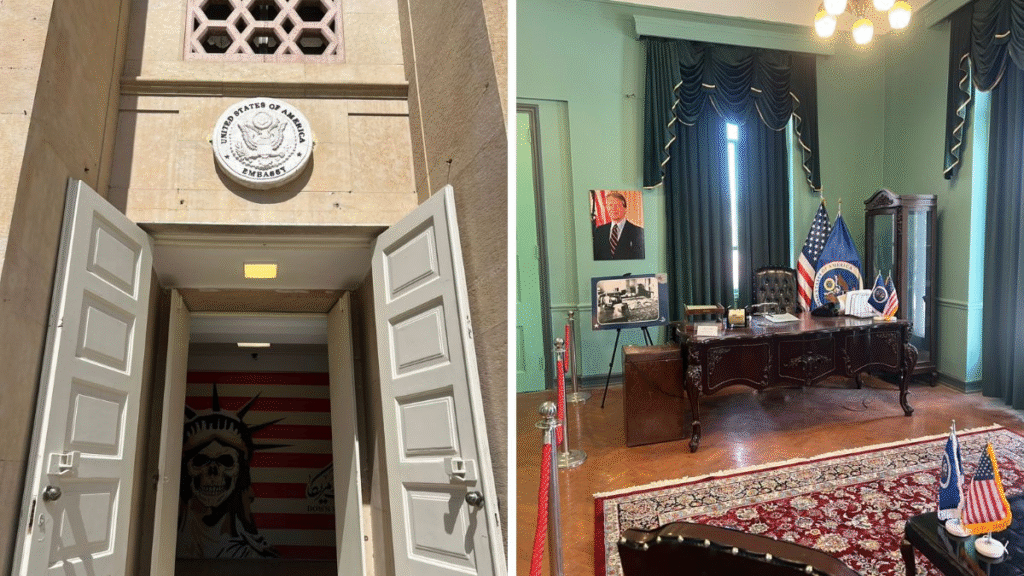
The US considers reopening its Tehran embassy in 2025 amid nuclear deal talks, marking a potential historic shift in Iran-US relations after decades of hostility.
Why This Development Matters
In a potential geopolitical breakthrough, the United States is reportedly considering reopening its embassy in Tehran in 2025, six years after the historic 2019 withdrawal. This comes as both nations engage in fresh nuclear negotiations, raising hopes for normalized relations. However, hardliners on both sides remain skeptical, warning of unresolved conflicts.
1. Background: A Decade of Frozen Relations
- The US closed its Tehran embassy in 1979 after the Iranian Revolution and hostage crisis.
- In 2015, the Iran nuclear deal (JCPOA) briefly improved ties, but the US withdrew in 2018 under Trump.
- Recent backchannel talks under President Biden’s administration have revived discussions on diplomatic re-engagement.
2. Why Reopen the Embassy Now?
For the US:
- A strategic move to counter China and Russia’s influence in West Asia.
- Potential oil trade benefits if sanctions ease.
For Iran:
- Economic relief from sanctions crippling its economy.
- Legitimacy boost for moderate factions ahead of 2025 elections.
3. Key Challenges & Opposition
- Hardliners in Iran have staged protests, calling embassy reopening a “surrender to America.”
- US Republicans oppose the move, citing Iran’s alleged support for militant groups.
- Security concerns persist—the 1979 embassy siege remains a traumatic memory.
4. What’s the Current Status?
- No official announcement yet, but sources confirm exploratory talks in Oman.
- The US may initially open a “interests section” (a limited diplomatic presence) before a full embassy.
- Iran demands sanctions removal first, while the US wants nuclear program concessions.
5. Global Reactions
- Israel: Strongly opposes, warning of “dangerous concessions.”
- EU & UK: Support dialogue but urge caution.
- Gulf States: Divided—some fear reduced US focus on their security.
6. What Happens Next?
- Phase 1 (2025): Possible small-scale diplomatic office in Tehran.
- Phase 2 (2026-27): Full embassy reopening if nuclear talks succeed.
- Wildcard: A new US/Iran president could derail progress.
Final Analysis
The potential US embassy reopening in Iran represents one of the most significant diplomatic shifts in decades. While obstacles remain, the mere discussion signals that both sides see value in de-escalation. Whether this leads to lasting peace or collapses like past efforts will depend on compromise—and political will.
